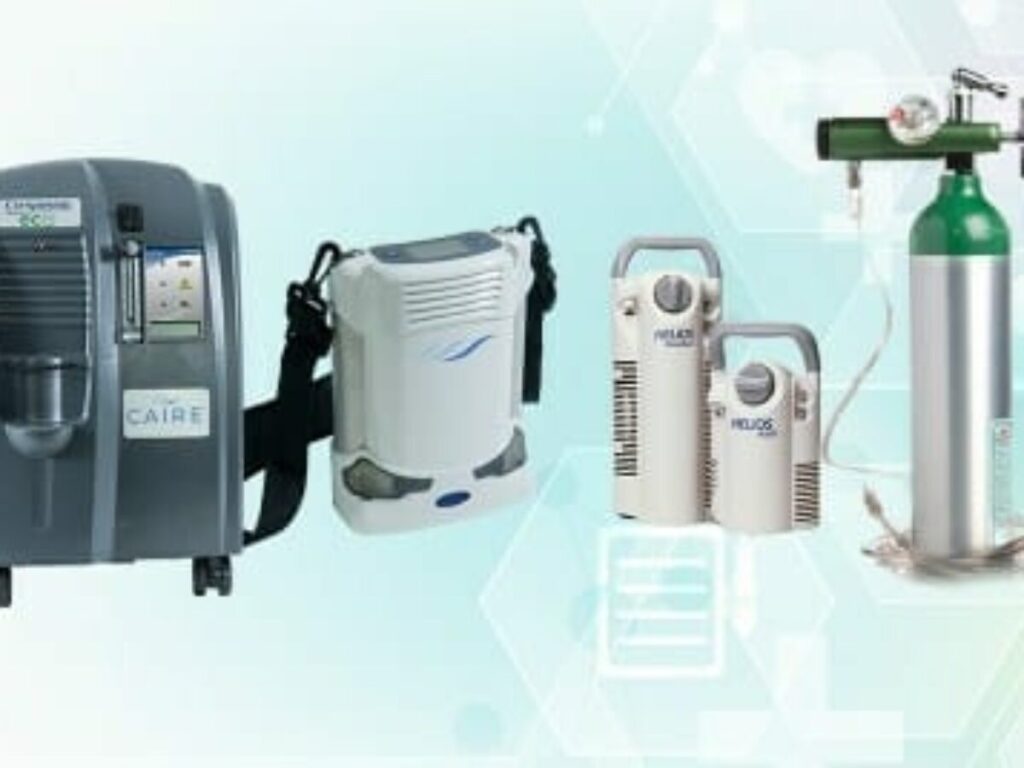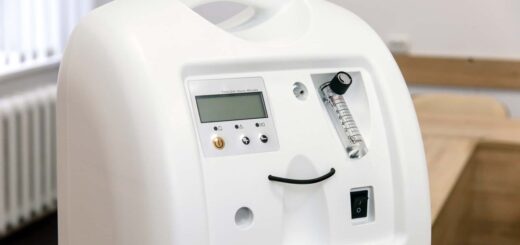How Much Does Oxygen Cost for Home Therapy in Australia?
What is Home Oxygen Therapy and When is it Prescribed?
Home oxygen therapy delivers supplemental oxygen to patients with chronic respiratory conditions who cannot maintain adequate blood oxygen levels naturally. This medical treatment primarily supports Australians living with chronic obstructive pulmonary disease (COPD) and other conditions causing severe hypoxaemia.
Doctors prescribe oxygen therapy at home only after blood gas analysis confirms dangerously low oxygen levels in the bloodstream. This testing typically occurs following hospital discharge after a respiratory exacerbation, ensuring patients genuinely require ongoing oxygen support at home.
Usage patterns vary based on individual medical needs:
- Continuous oxygen therapy requires patients to use their oxygen concentrator for at least 15 hours daily, particularly those with severe resting hypoxaemia
- Ambulatory oxygen suits physically active patients who need supplemental oxygen during movement and daily activities
The prescription approach ensures oxygen therapy addresses genuine medical necessity rather than serving as a general wellness measure, which directly impacts how much does oxygen cost for home therapy in Australia and eligibility for government support programs.
How Much Does Oxygen Therapy Cost in Australia?
The cost of home oxygen varies significantly based on equipment type and individual usage requirements. Patients typically access oxygen through concentrators or cylinder systems, with concentrators being the most common choice for continuous home use.
Oxygen Equipment Prices
Oxygen equipment price ranges depend on whether you purchase or rent:
- Oxygen concentrators: Purchase prices range from $800 to $3,000 for standard models, with rental options available through medical suppliers at approximately $50-$150 per month
- Oxygen cylinders: Rental costs typically range from $30-$80 per cylinder, with refill fees adding to ongoing expenses
- Portable oxygen concentrators: Higher-end devices can cost $2,500-$5,000 for purchase
Ongoing Costs of Using Oxygen Therapy
The electricity cost oxygen concentrator users face represents a substantial ongoing expense. A standard concentrator running 15 hours daily consumes approximately 300-600 watts, translating to roughly $200-$400 annually in additional electricity costs depending on your state’s rates and usage duration.
Patients requiring higher oxygen flow rates or 24-hour therapy face increased electricity consumption. Those using ambulatory oxygen may need both a home concentrator and portable system, effectively doubling equipment-related expenses. Cylinder users avoid electricity costs but typically pay more for regular refills and delivery services, particularly in regional areas where access may be limited.
What Government Support Is Available to Offset These Costs?
Australian governments provide targeted financial assistance to reduce the burden of home oxygen therapy expenses. South Australia’s Medical Cooling and Heating Electricity Concession offers eligible residents a rebate on electricity bills when running oxygen concentrators, recognizing the continuous power consumption these devices require.
State-based health concessions programs extend beyond electricity rebates. Pensioners, healthcare card holders, and low-income earners can access various cost-of-living supports that help offset medical equipment expenses. Each state administers its own concession scheme with varying benefits.
Eligibility requirements typically include:
- Holding a valid concession card (Pensioner, Health Care, or Commonwealth Seniors)
- Providing medical documentation confirming oxygen therapy prescription
- Being the primary account holder for electricity bills (for energy rebates)
- Meeting residency requirements within the specific state or territory
Patients should contact their state’s concessions hotline or visit the relevant government services website to determine which programs apply to their circumstances and how to lodge applications for these government rebates oxygen therapy support schemes.
How Do Federal Programs Assist Patients With Home Oxygen Costs?
Federal assistance provides crucial financial relief for home oxygen users through two primary channels.
1. Department of Veteran’s Affairs support
The Department of Veteran’s Affairs support covers eligible veterans requiring oxygen therapy, offering comprehensive health services and payment assistance that can significantly reduce out-of-pocket expenses. Veterans should contact DVA directly to determine their specific entitlements and application requirements.
2. Services Australia payments
Services Australia payments offer broader support through the Essential Medical Equipment Payment, which provides financial assistance to help manage the running costs of essential medical equipment at home. This payment specifically targets electricity expenses associated with operating oxygen concentrators and other vital medical devices. Eligible recipients may receive quarterly payments to offset these ongoing costs.
Eligibility criteria for the Essential Medical Equipment Payment
To qualify for the Essential Medical Equipment Payment, patients must:
- Hold a valid Medicare card
- Have a medical condition requiring continuous use of essential equipment
- Meet residency requirements
- Receive certain government payments or hold a concession card
The payment amount varies based on individual circumstances and the type of equipment used. Patients can apply through their myGov account or by contacting Services Australia directly.
Additionally, there are resources available to help individuals remain living at home if they have a chronic disease or serious illness, which can further assist in managing home oxygen costs and overall healthcare needs.
Can Private Health Insurance Help With Home Oxygen Therapy Costs?
Private health insurance subsidies may provide valuable financial assistance oxygen equipment users, though coverage varies significantly between insurers and policy levels. Some private health funds offer partial reimbursement for purchasing or renting oxygen concentrators and cylinders, while others include respiratory equipment within their extras or ancillary cover. The level of private insurer benefits depends on your specific policy tier and whether you hold hospital cover, extras cover, or both.
Checking your eligibility requires direct contact with your insurer:
- Review your policy’s Product Disclosure Statement for medical equipment provisions
- Call your insurer’s customer service line to confirm oxygen therapy coverage
- Request written confirmation of any subsidy amounts or annual limits
- Ask whether coverage extends to both equipment purchase and ongoing rental costs
- Inquire about waiting periods that might apply to new policies
Some insurers require a prescription or medical certificate from your respiratory specialist before approving claims. Keep all receipts and documentation related to your oxygen equipment purchases, as these will be necessary for lodging claims and maximizing your potential reimbursement. Read more about home oxygen machine vs oxygen tank: which is better for daily use?
What Are the Safety Considerations That May Affect Costs?
The safety risks associated with home oxygen therapy can significantly impact both direct and indirect expenses for patients. One of the most critical concerns involves the fire hazards smoking oxygen therapy creates—oxygen accelerates combustion, making cigarettes, candles, or open flames extremely dangerous. Patients who smoke near oxygen equipment face devastating consequences, including severe burns and property damage that insurance may not cover. According to a 2008 report on fires and burns involving home medical oxygen, these incidents can lead to catastrophic outcomes.
Education Costs
To mitigate these risks, patient education costs form a necessary investment in preventing accidents. Healthcare providers must allocate time and resources to thoroughly train patients and caregivers on:
- Maintaining safe distances from heat sources and flames
- Proper storage of oxygen cylinders away from flammable materials
- Recognition of warning signs indicating equipment malfunction
- Emergency response procedures for oxygen-related incidents
These educational sessions, while adding to initial therapy setup expenses, prevent catastrophic costs associated with accidents.
Home Modifications
In addition to education, homes may require modifications like installing smoke detectors or removing potential ignition sources, representing additional upfront investments.
Insurance Implications
Insurance premiums might increase for households with oxygen equipment, particularly if occupants continue smoking despite medical advice. Therefore, it’s crucial to understand the oxygen fire safety in healthcare facilities as part of the overall safety considerations in home oxygen therapy.

How Often Should Patients Review Their Oxygen Therapy Needs?
Patients should have clinical reviews every 3-6 months to confirm ongoing eligibility and assess whether their oxygen dosage remains appropriate. These therapy adequacy assessments involve repeat blood gas analysis to measure current oxygen levels and determine if the prescription needs adjustment based on changes in respiratory function.
Regular clinical follow-up for home oxygen serves multiple purposes beyond medical monitoring. Reviews can identify patients who no longer require therapy or those who might benefit from reduced usage hours, directly impacting How Much Does Oxygen Cost for Home Therapy in Australia? through lower electricity consumption and equipment wear.
Changes in prescription following these assessments can significantly affect long-term expenses:
- Reduction in daily usage hours decreases electricity costs and extends equipment lifespan
- Switching from continuous to ambulatory oxygen may reduce overall therapy expenses
- Discontinuation of therapy eliminates ongoing costs entirely for patients whose condition improves
- Increased oxygen flow rates may require equipment upgrades or more frequent cylinder deliveries
Healthcare providers use these ongoing eligibility reviews to ensure patients receive clinically necessary treatment while avoiding unnecessary expenditure on therapy that no longer provides benefit. Such assessments are crucial, especially considering the insights from the GINA 2024 Strategy Report, which emphasizes the need for regular evaluation of asthma management strategies, including oxygen therapy.
Moreover, it’s essential to understand that the need for oxygen therapy can change over time due to various factors such as disease progression or improvement. This is highlighted in the Breathe journal article, which discusses the importance of regular follow-ups and adjustments in treatment plans based on patient-specific needs and responses to therapy.
Conclusion
How can patients make home oxygen therapy more affordable while maintaining quality care? Active exploration of available assistance programs makes oxygen therapy financially sustainable for most Australian patients. Multiple support pathways exist—from state-based electricity rebates to federal Essential Medical Equipment Payments—that significantly reduce out-of-pocket expenses when properly accessed.
Patients should take these practical steps to optimize managing home oxygen costs Australia:
- Contact your state health department about concession programs specific to your region
- Apply for Services Australia’s Essential Medical Equipment Payment if eligible
- Review your private health insurance policy for oxygen equipment subsidies
- Discuss equipment options with your respiratory specialist to identify the most cost-effective solution for your needs
Support options for patients extend beyond direct financial assistance. Veterans can access specialized DVA programs, while state governments offer targeted rebates for concentrator electricity costs. These combined resources create a comprehensive safety net for respiratory patients.
The path to affordable home oxygen therapy requires balancing financial considerations with clinical effectiveness. Cost should never compromise treatment quality—proper oxygen therapy improves survival and quality of life for severe hypoxaemia patients. By leveraging available support programs and maintaining regular clinical reviews, patients can access life-sustaining oxygen therapy without overwhelming financial burden. Your healthcare team remains your primary resource for navigating both clinical and financial aspects of home oxygen management.
